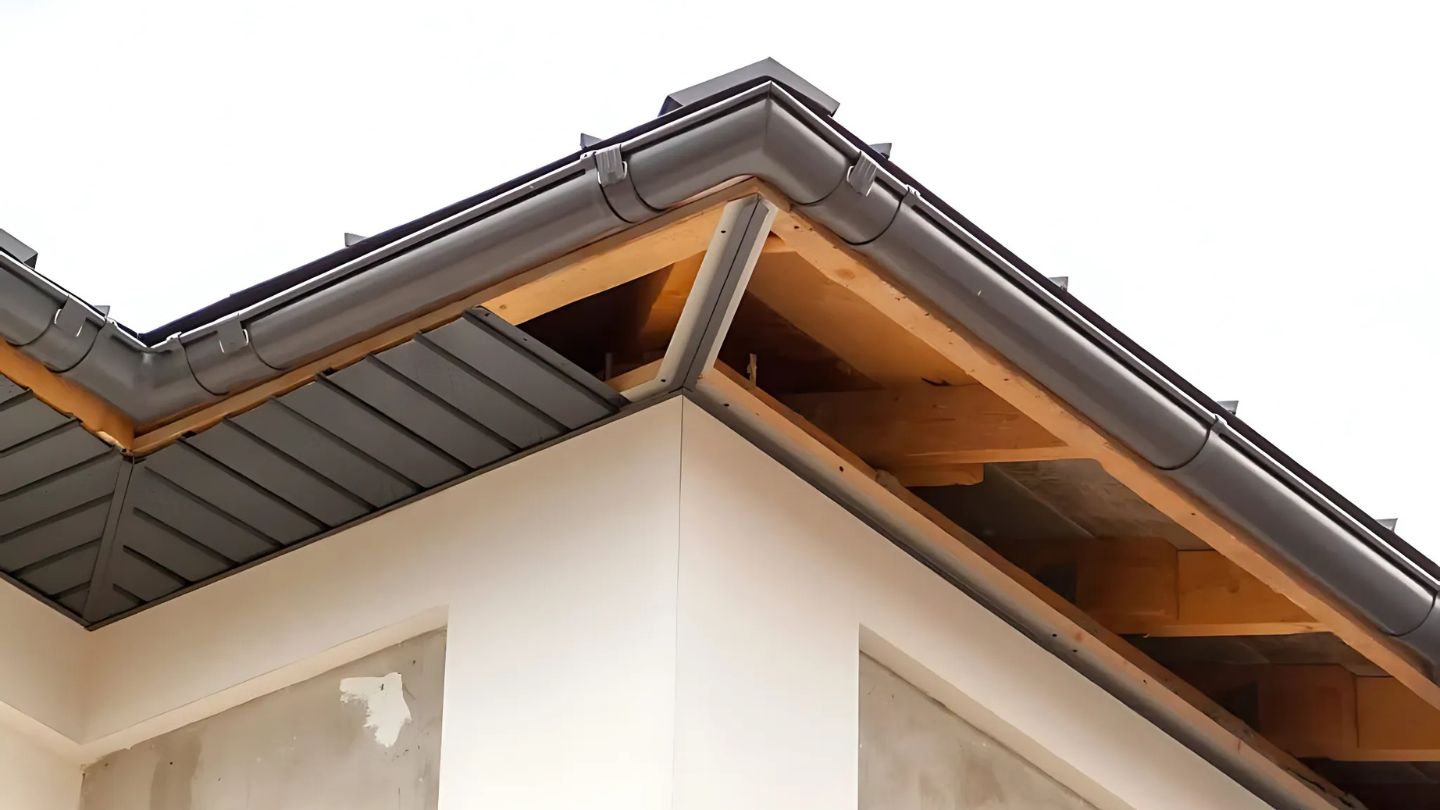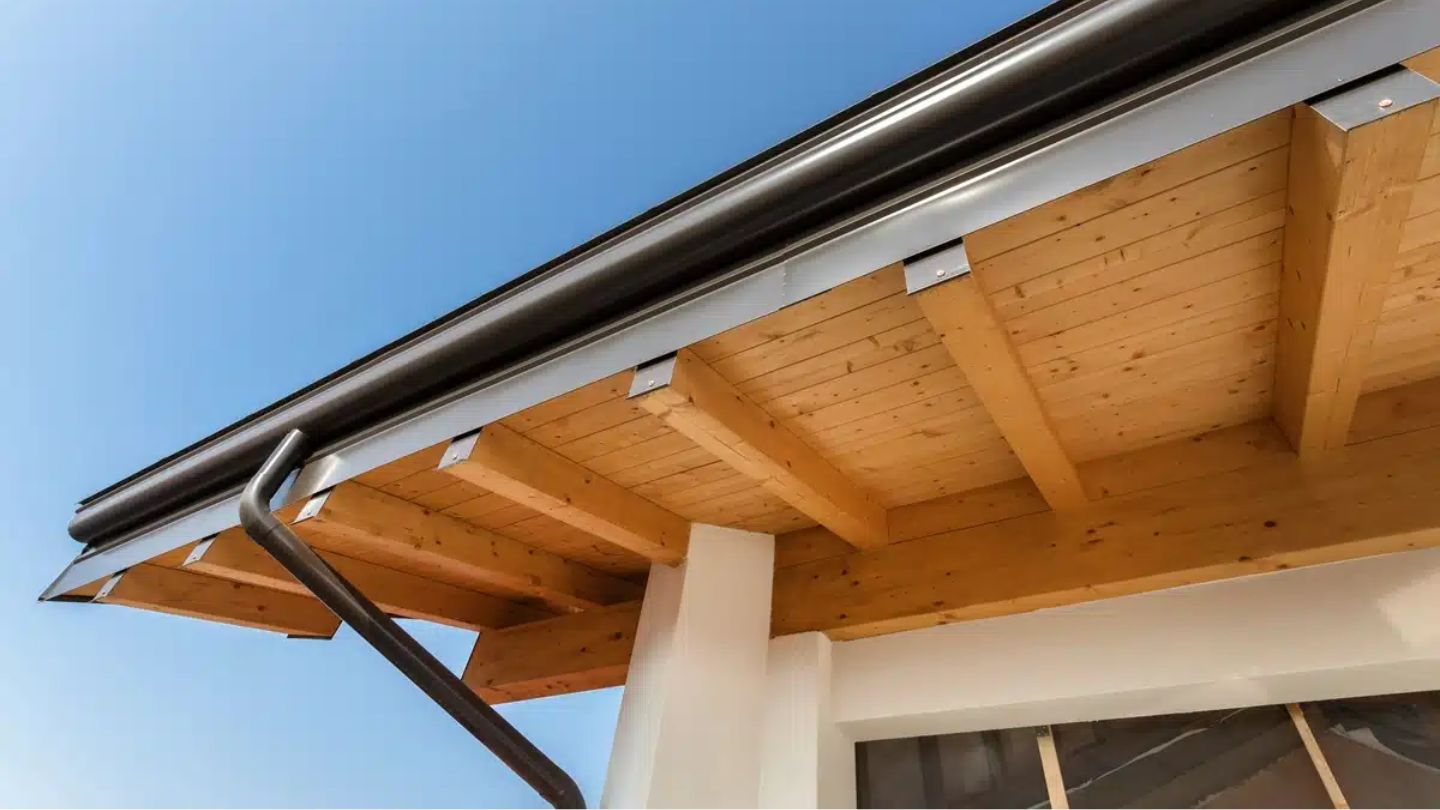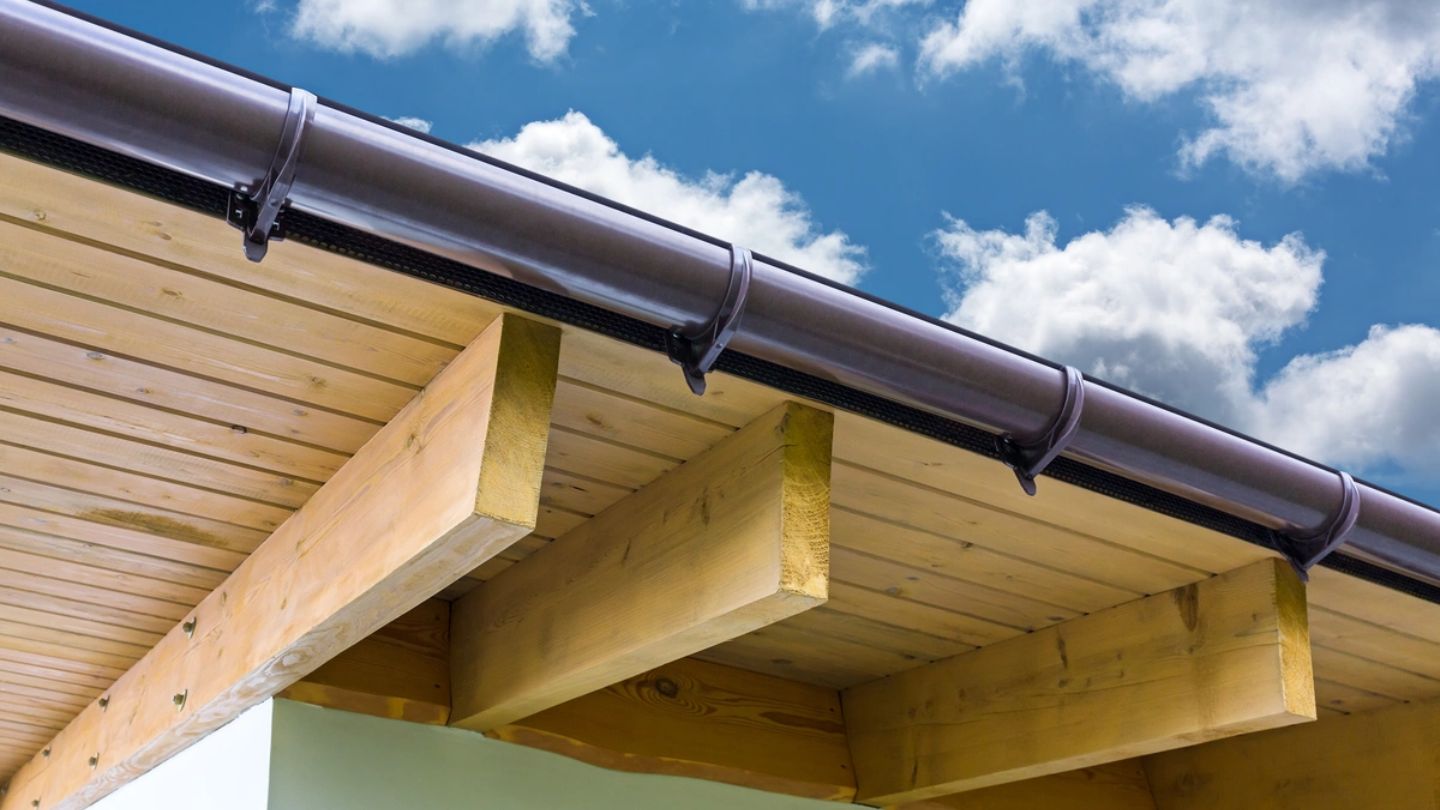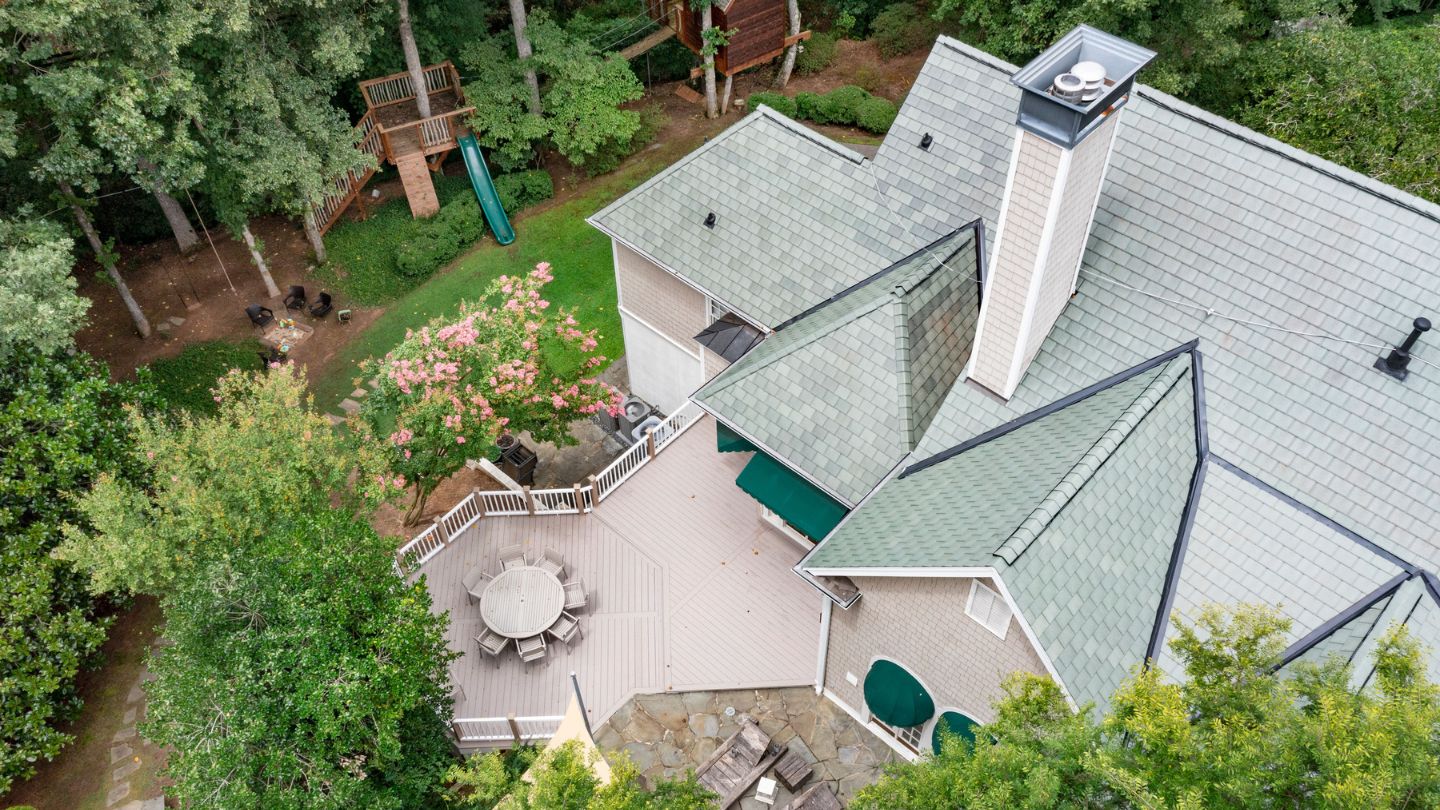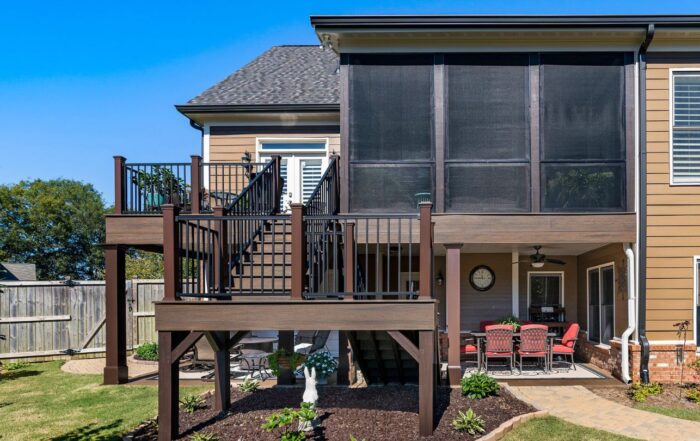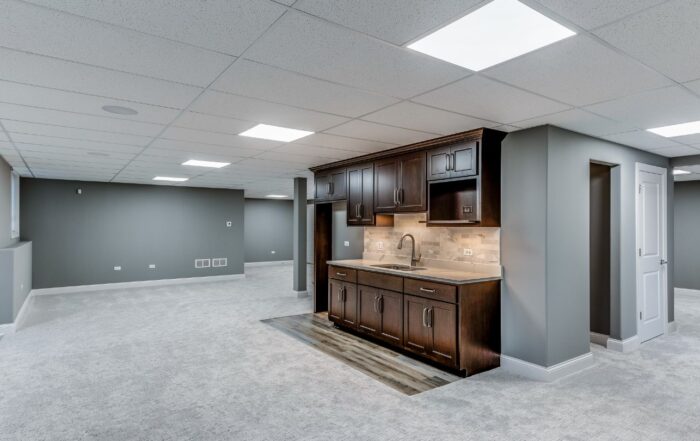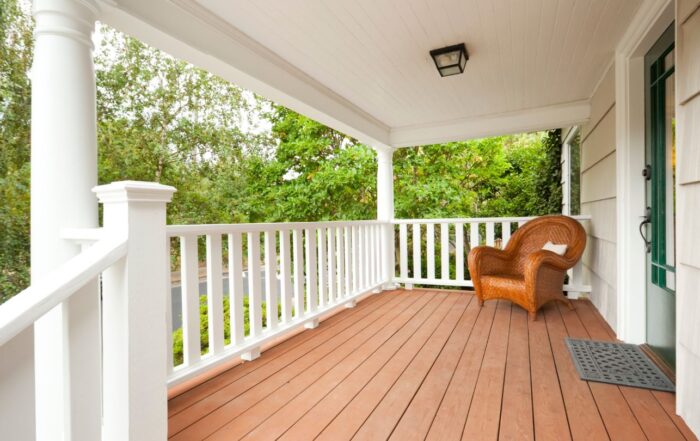How to Replace Wood Under Roof Overhang: Best Steps and Tips
Home
Blog
- How to Replace Wood Under Roof Overhang: Best Steps and Tips
Replacing wood under the roof overhang is vital to keep your home structurally sound. This guide covers the steps on how to replace wood under a roof overhang, identify and safely remove damaged wood, and then install new materials. You’ll also get practical tips for a durable replacement. Start here for a smooth repair process.
Key Takeaways
- Regular inspections of roof overhangs are crucial for early detection of issues like decay, moisture, and mold, which can prevent costly repairs.
- Careful removal of damaged wood and treatment of exposed areas with preservatives and sealants are essential steps before installing new wood to ensure durability.
- Professional assistance can enhance the safety and effectiveness of roof overhang replacements, preserving the structural integrity of your home.
Overview
The eaves of the roof are often neglected until visible damage occurs. Signs such as rot, moisture infiltration, mold growth, and drooping areas indicate serious issues that need immediate attention. Addressing these problems promptly prevents costly structural damage.
It is crucial to inspect for eave rot, as moisture and drainage issues can lead to decay, potentially causing further structural problems if not addressed.
Extensive decay requires thorough replacement by professionals rather than patchwork fixes. Expert carpenters ensure that all underlying damage is addressed, using quality materials and proper techniques to safeguard the structural integrity of your home. This approach avoids recurring issues and ensures long-lasting results.
Before starting any repairs, professionals will inspect the full scope of the damage, often removing sections like the soffit to reveal hidden issues. They also prepare and prime new wood materials for durability, ensuring a snug, secure fit to prevent future complications.
Recognizing Damage in Roof Overhangs
The first step toward repair is recognizing signs of deterioration. Indicators include:
- Visible rot or decay
- Damp spots caused by water infiltration
- Mold or mildew growth
- Sagging or drooping sections
Ignoring these signs can lead to severe structural risks, including pest infestations and further damage to fascia boards and soffits. Professionals use specialized tools and techniques to pinpoint the root causes, such as poor water drainage or improper overhang construction.
Additionally, skilled carpenters may recommend reinforcing overhangs with high-quality materials, like tongue-and-groove panels, to add both durability and visual appeal. Proper installation beneath the eaves with features like cove molding further enhances the structure’s longevity and robustness.
Preparing for Replacement
Professionals ensure all tools and materials are ready before starting any repair. They use advanced carpentry tools, such as reciprocating saws, circular saws, and premium wood preservatives, to guarantee precision and efficiency.
To secure new wood and ensure long-lasting durability, professionals use galvanized nails, which resist rust and provide a strong hold.
Unlike DIY approaches, professional carpenters prioritize safety and efficiency. They secure ladders properly, wear protective gear, and ensure that all surrounding areas are clear of hazards. Before starting, they map out a detailed repair strategy, minimizing disruptions and avoiding common mistakes that can arise from improper planning.
Removing Damaged Wood
The removal of damaged wood is a meticulous process that requires expertise to avoid damaging surrounding structures. Professionals carefully use tools like pry bars and saws to separate decayed sections while preserving adjacent materials. Additionally, the careful removal of soffit boards is crucial to prevent further damage to the surrounding structures.
Carpenters take the following steps during wood removal:
- Identify compromised areas and ensure a clean, controlled removal process.
- Use precision tools to cut away rotted sections while protecting nearby surfaces.
- Inspect underlying structures to confirm no additional damage exists.
Expert carpenters are trained to handle resistant areas efficiently, ensuring that no part of the existing structure is unnecessarily disturbed. This process sets a solid foundation for installing new wood.
Treating Exposed Areas
Once damaged wood is removed, professionals focus on treating exposed areas to prevent future issues:
- They thoroughly address the source of water infiltration using proven sealing methods.
- High-grade wood preservatives are applied to protect surfaces from moisture and decay.
- Moisture barriers or weatherproof sealants are added for extra durability.
This professional approach ensures a solid, moisture-resistant foundation for the new wood. Unlike DIY fixes, carpenters use industry-grade materials that offer long-term protection.
Installing New Wood
Professional installation of new wood under roof overhangs ensures precision, durability, and a seamless finish. Skilled carpenters measure, cut, and prime the wood for an exact fit. They follow a process that includes:
- Aligning new wood sections to match the structure’s existing framework.
- Apply weatherproof sealants and primers to protect the lumber from extreme weather conditions.
- Ensuring all materials are level and flush for structural stability.
Installing a new soffit with proper weatherproofing measures is crucial to prevent water damage and enhance the durability of the home’s exterior.
Carpenters also add protective finishes, such as outdoor-grade paints or stains, to guard against moisture, UV rays, and wear over time. By using expert tools and techniques, professionals ensure the repair is both functional and visually appealing.
Finishing Touches
Attention to detail in the finishing stages ensures a polished, professional look. After installation, carpenters take the following steps:
- Prime and paint the surface with high-quality exterior-grade products for durability.
- Seal all joints and edges to protect against water infiltration.
- Inspect the entire overhang to confirm structural integrity and aesthetic appeal.
Careful alignment and securing of replacement fascia with galvanized nails are crucial to ensure a polished and durable finish.
Professionals focus on blending the repaired sections seamlessly with the home’s exterior, ensuring both protection and visual cohesion. A professionally finished roof overhang will withstand harsh weather while enhancing your property’s curb appeal.
Regular Maintenance Tips
Routine inspections and maintenance are essential to keep roof overhangs in optimal condition. Professional carpenters recommend the following:
- Schedule annual inspections to identify potential issues early.
- Treat and seal wooden structures to prevent moisture and mold.
- Ensure proper water runoff to avoid pooling or leaks.
If minor issues arise, professionals can address them promptly with targeted repairs, preventing expensive restorations in the future. Regular upkeep preserves your overhang’s longevity and structural integrity.
Professional Assistance
Replacing wood under roof overhangs is a complex task that requires professional expertise to ensure safety, precision, and durability. Skilled carpenters have the tools, experience, and knowledge to diagnose the full scope of damage, apply effective treatments, and install new materials that protect and enhance your home for years to come.
Professionals thoroughly inspect for underlying issues like moisture intrusion, structural weaknesses, and improper drainage, ensuring that all repairs address the root cause and not just surface damage. With their expertise, they use premium materials and proven techniques to achieve long-lasting results, eliminating the risk of incomplete or faulty DIY repairs.
Summary
Replacing wood under roof overhangs is a complex task that requires professional expertise to ensure precision and durability. From identifying damage to installing new, treated wood with finishing touches, every step is essential for long-lasting outcomes. Regular maintenance and expert assistance are key to maintaining your home’s structure and appearance.
At Bradford Crafted, we excel in home renovations throughout North Georgia, providing custom carpentry services that enhance the beauty and resilience of your property. For expert advice and a complimentary consultation, contact us today to ensure your home gets the care it deserves. Let us help you transform your home with our professional touch!
Frequently Asked Questions
1. How often should roof overhangs be inspected for damage?
Roof overhangs should be inspected at least twice a year, ideally in spring and fall, to catch early signs of moisture damage, rot, or pest issues.
2. Can damaged roof overhangs lead to other structural problems?
Yes, neglecting damaged overhangs can cause water infiltration, which may affect fascia boards, soffits, and even interior walls over time.
3. Why is professional wood replacement better than temporary repairs?
Professionals address the root cause of damage, use high-quality materials, and ensure proper installation, which prevents recurring issues and enhances durability.
Table of Contents
Recent Blogs
Top Qualities to Look For in A Composite Deck Contractor
Searching for a composite deck contractor? Knowing the essential qualities to prioritize when selecting a company is crucial to ensure [...]
4 Great Reasons You Should Renovate Your Basement Today
Thinking about renovating your basement? Here are four great reasons you should renovate your basement now. Turning an underutilized space [...]
Top Things to Consider When Building a Porch in Milton
Planning to build a porch in Milton? There are several important things to consider when building a porch in Milton, [...]

